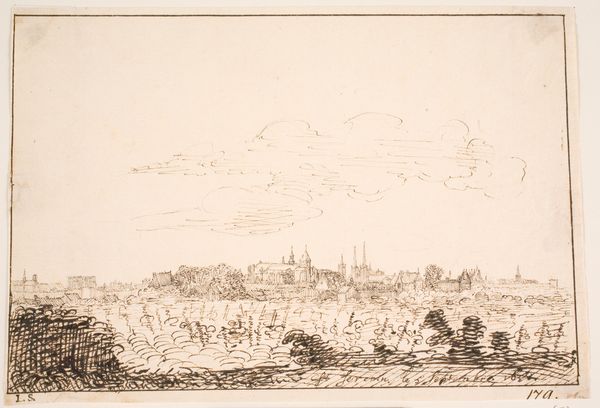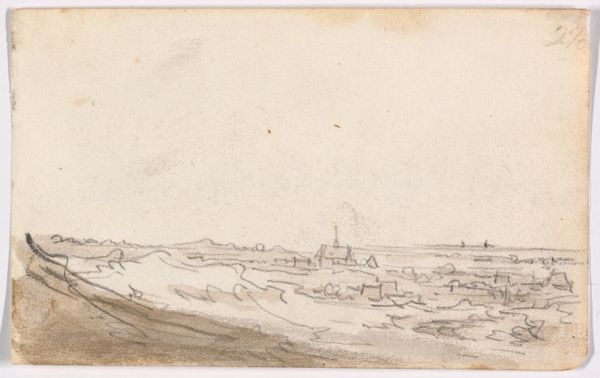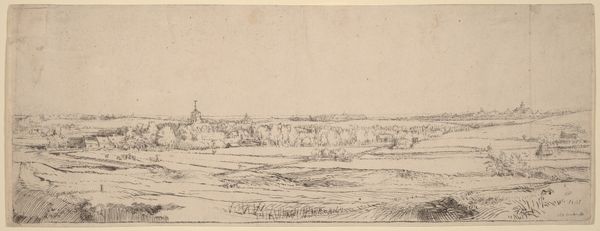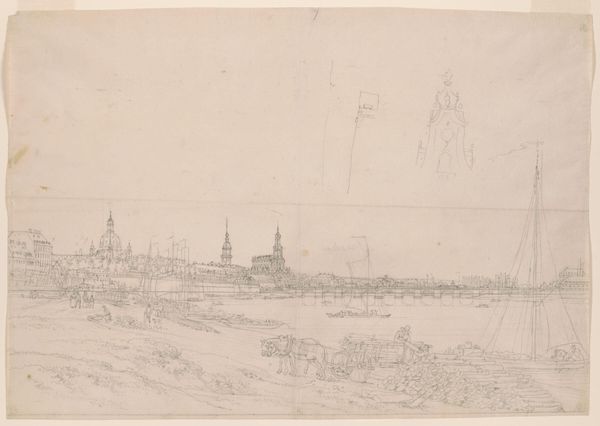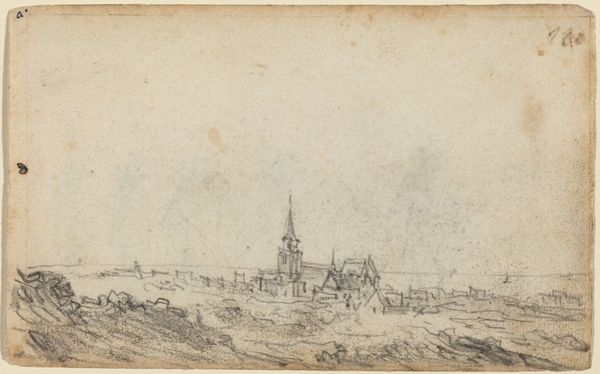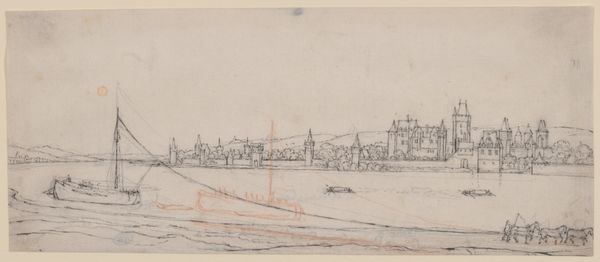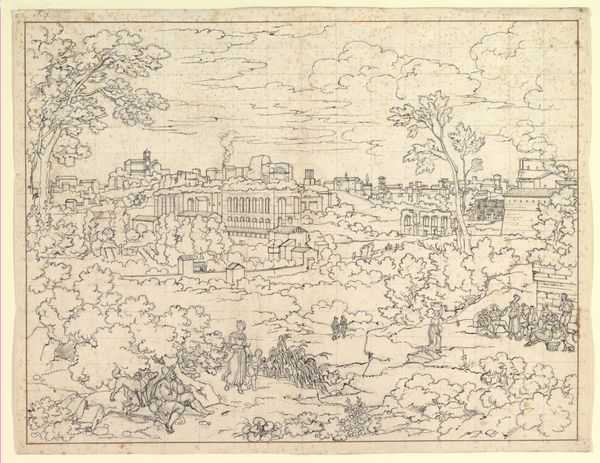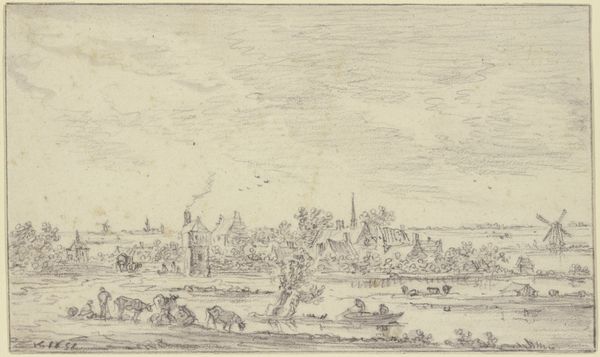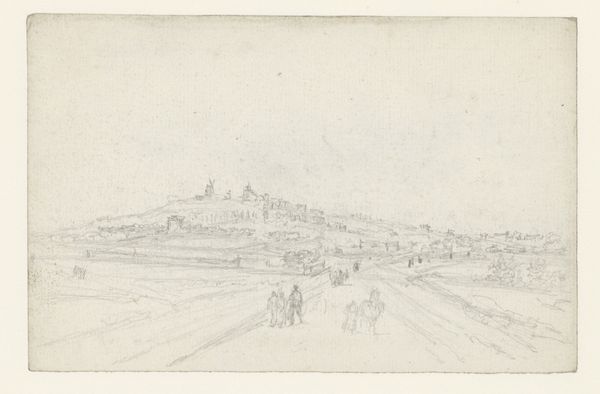
Padua from the East, with San Francesco and the Salone 1721 - 1780
0:00
0:00
drawing, print, etching, ink, engraving
#
landscape illustration sketch
#
drawing
#
baroque
# print
#
etching
#
human-figures
#
landscape
#
etching
#
ink
#
human
#
cityscape
#
history-painting
#
engraving
#
building
Dimensions: 7 1/2 x 10 11/16in. (19.1 x 27.1cm)
Copyright: Public Domain
Editor: Here we have Bernardo Bellotto's "Padua from the East, with San Francesco and the Salone," made sometime between 1721 and 1780. It’s an etching in ink, giving it a very light, almost ephemeral feel. The composition seems fairly standard, but what catches my eye is how Bellotto portrays the figures—they appear almost incidental to the grandeur of the city. What do you see in this piece, beyond just a cityscape? Curator: I see a potent dialogue about power and representation embedded within this seemingly simple landscape. Bellotto, nephew of Canaletto, positions Padua through a lens that's both aesthetically pleasing and politically charged. The diminutive figures underscore the dominance of the architecture, yes, but let's think about who this image was likely made for. The elite, certainly. And what are they seeing? Assurance of their place in the social hierarchy reflected in the very landscape itself. Who has the power to have their image reproduced and disseminated and who doesn't? Editor: That's fascinating! I hadn't considered the social implications of showcasing the city in this way. The emphasis is really on architecture, not on people's individual lives. Curator: Precisely! Consider how the 'Grand Tour' informed perspectives during this era. The landscape becomes a spectacle for consumption, a trophy almost. Are we looking at a neutral depiction, or is this perpetuating a narrative of control? Notice too how the sketch-like quality flattens different parts of the landscape, what impression do you think this gives to the viewer of this piece at that time? Editor: I see what you mean now. It's like Bellotto is offering a particular reading of Padua. I originally saw just a pretty picture, but I'm walking away with something very different! Curator: It's about questioning whose stories get told and how, even within seemingly innocuous scenes. That’s what makes art history so relevant—it challenges us to unpack the power dynamics that have shaped our visual culture.
Comments
No comments
Be the first to comment and join the conversation on the ultimate creative platform.
